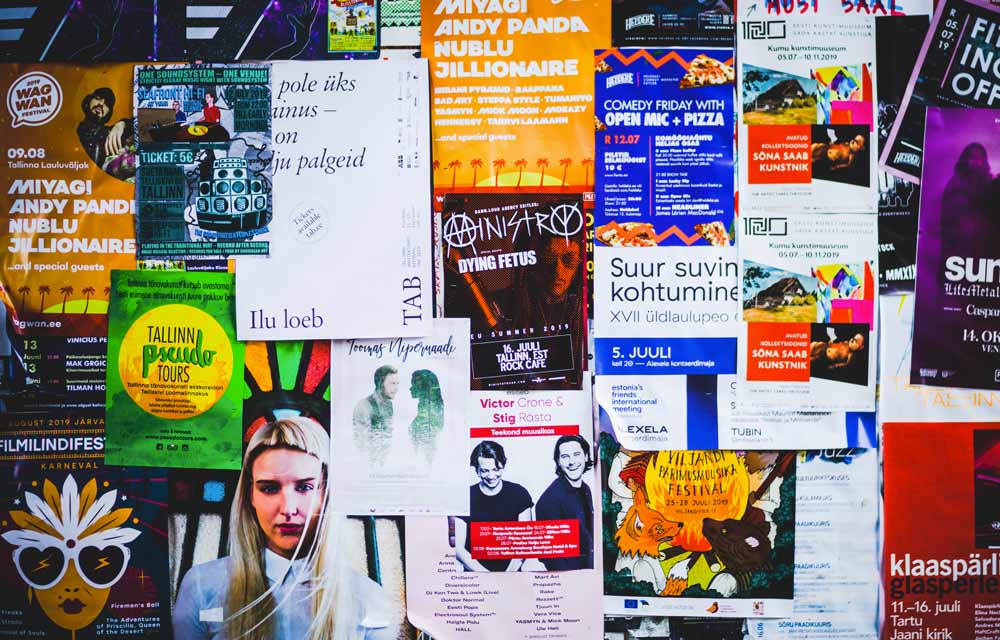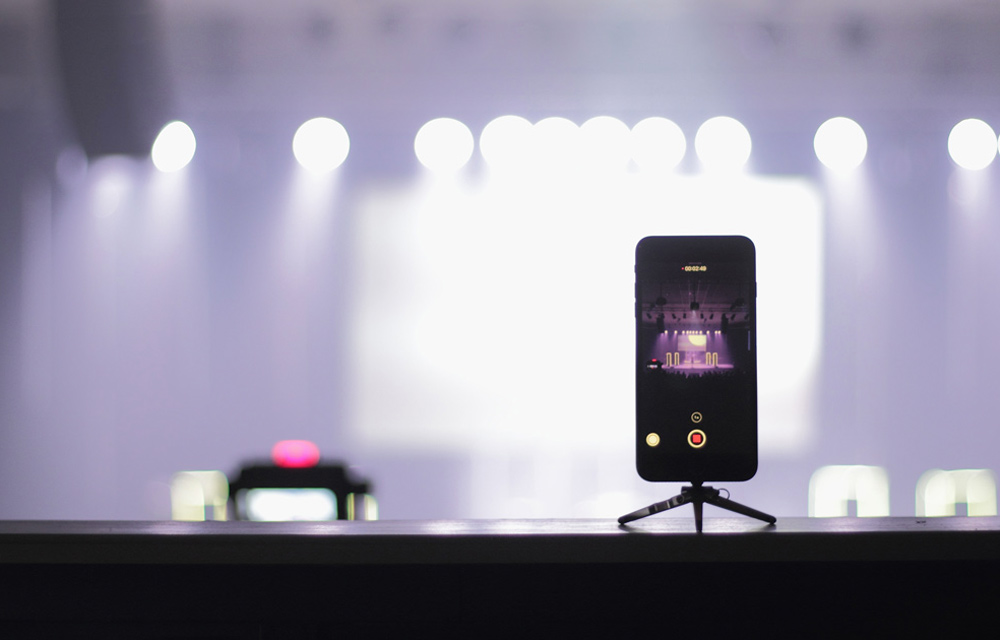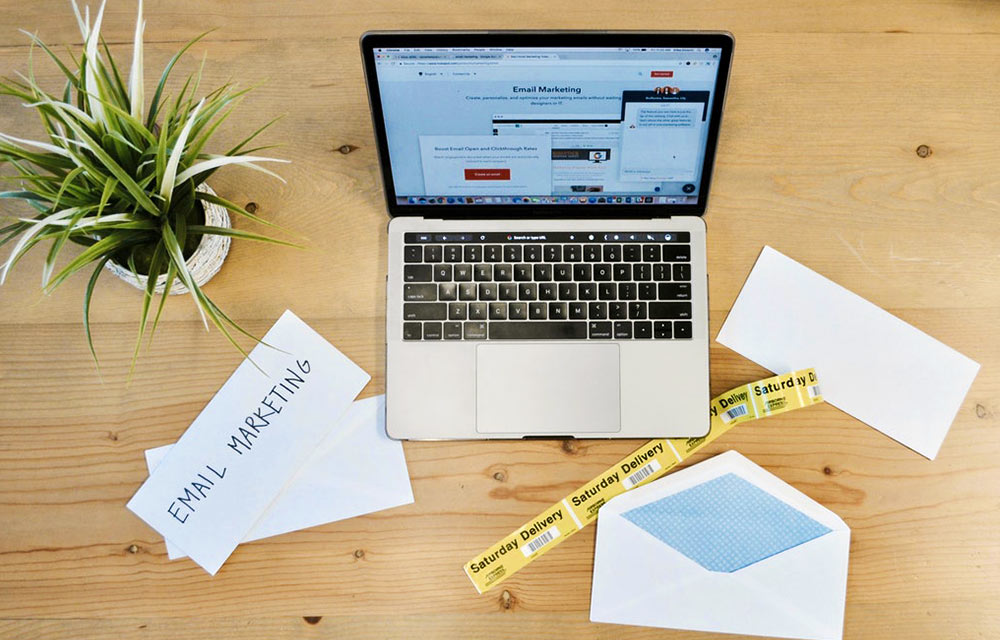To keep your event at the top of your attendees’ minds, you need to create consistency between the themes tackled and the visual experience. If these two elements are coordinated, your message will have a bigger impact – and that is what makes a successful event! Used in the right way, design can improve message memorisation. Whether you are a professional or a beginner in the field, you will see that there is a very simple way to use design to enhance the visual perception of your event.
A good design is not sufficient to launch your event. You will also need a good e-mail marketing tool connected with your event registration system, in order to send the good message to the right person.
Here are all the steps to follow to ensure the success of your event’s visual communication.
Contents
- Create a schedule
- Update your Media Kit
- Plan communication elements during the event
- Communicate after the event
1. Create a schedule
You have built your team and decided on the nature of your event, all that you need to do now is to make it happen. Communication and event planning can both be included in a preliminary document: the schedule.
The event’s schedule is to be used as a guide that will be useful from beginning to end, whether in paper and/or digital format. A valuable management tool, it lists the tasks planned and actions carried out in a calendar you created. For each stage of the project, you can identify the financial and logistical resources, as well as the person in charge of the task. A real key to anticipating, your schedule makes it possible to limit unforeseen events and control your event from A to Z!
2. Update your Media Kit
While several non-verbal elements play an important part in the impact your communication campaign will have, the visual aspect remains the most significant one. An event’s reach is based on two basic elements: vision and exposure. The former sets your social approach and professional spirit, the latter defines how you interact with the public. Consistency between vision and exposure is therefore essential to convey an authentic message – and that consistency is based on your media kit’s visual atmosphere.
Once you have a schedule, it is time to update your information and communication elements.
Website
An event means interested individuals and new people visiting your website. Check that it is up to date: are the banner ads up to date, are the links to your social media still working, are the photos/videos of good quality? The website is your window to the world, so make sure that the elements and information are optimised.
Email signature
Email is the most convenient way to communicate with your customers and partners and it is made all the more relevant by a well-designed and informative signature. Check that your company logo is clearly visible, and do not hesitate to mention the event in your email signature – this shows your involvement and boosts interest in the event by displaying it as a milestone expected by many!
Digital media: groups and social media
Whether it’s Facebook, Instagram, Twitter, LinkedIn or Meetup, use them to tease your event! Either by showing the different steps of the event organisation, or simply by broadcasting the image of your event simultaneously across all your networks. To save time, you should use automated image adjustment tools to avoid having to create special content for each platform.
On Canva, the “resize” feature allows you to convert any type of document to the optimal size for social media platforms in a single click. For example, if you have created an image in “Event cover” format, simply check “Instagram post” and/or “flyer” to automatically resize the image without having to rework and readjust the design. Convenient!
Printed materials: Posters, flyers, stickers, etc
As far as your event’s communication is concerned, traditional advertising media remain efficient when combined with the digital media mentioned above. Here, all the elements must be easy to read because, unlike social media, you can’t give more details in a message or comment.
Thus, the logo, the name of the event, the names of the guests and any practical information must be displayed in a clear and concise manner. The “resize” tool is also very useful here as it helps with effortlessly obtaining complete consistency across your chosen materials.
Ticketing platform
Ticketing is the key to any event. In addition to acting as an access pass, it is the first real indicator of your event’s visual atmosphere. Several ticketing design tools exist. On Weezevent, it is very easy to create a custom ticket template in a few clicks!
3. Plan communication elements during the event
Badges and stickers
Event badges help with security and attendee identification. Otherwise, stickers displaying the first name, surname and role of the participant will do the trick. They allow identification, while enabling socialisation between participants.
Event programme and brochure
The event programme and brochure are two elements that are often forgotten due to lack of time, but they do matter in the perception of your brand. On the one hand, they allow the participant to feel part of your project, and on the other hand, they allow him/her to make the most of the event itself and the information you want to share about your organisation. These custom materials are easy to create and will add a human touch to your brand!
Slideshow
Your presentation material must be flawless. Photos and videos must be of high quality. If this is not the case, unless absolutely necessary, consider removing sub-optimal content. The colour scheme and typography of the document must of course reflect your brand. And above all, we advise you to save your presentation on several media (USB key, hard disk, etc.), in order to avoid any unfortunate unexpected event.
Live Videos
Broadcasting a live event no longer requires significant investment and equipment. Today, a tripod and a smartphone are enough to livestream an event, either in part or in full. Think about filming the attendees as well as the speakers and try to show the atmosphere and energy of the place on your social media. This will allow you to gain exposure and encourage engagement (likes, comments, etc.). Later, this content can even be added to your website, to support your storytelling and authenticity.
Signage
As both an orientation and entertainment tool, signage is increasingly integrated into event landscapes, as a sign, on a screen or on the ground.
Signage uses design to complement basic information with practical elements. Thus, it should indicate, among other things:
- the different entrances and exits;
- where to get badges and information;
- the toilets;
- where to get food and drinks;
- the different event rooms and speakers;
- merchandise areas;
- the photocall area;
- etc.
Goody bags
Goody bags usually contain advertising items distributed by a brand or company. Its impact is made all the more influential by the fact that it enters the recipient’s home, not to mention the pleasure it brings. Very inexpensive to set up, it generates high memorisation rate from the audience to whom it is offered, which makes it the perfect ally of all events.
Water bottle, tote bag, cup, gadget, seeds to grow, notebook, pen, key ring, t-shirt, etc., you have many options. You can choose to design the goodies yourself or ask a partner, who will benefit in turn from the participation or exposure at your event.
Business cards
The success of an event is also measured by the number of business cards exchanged. Updating your card is a major requirement. To be handed in person, left on a table in plain view during your presentation, on the counter at the food court or at a point of sale – it is up to you to choose what is best for you!
4. Communicate after the event
While the lifespan of a physical event is limited, there are a thousand and one ways to make it last over time:
- by sending a thank you email to each of the participants with, ideally, the photo(s) in which they appear;
- by sharing photos and videos on your social media;
- by writing a post on your company’s blog summarising the highlights of the event;
- by getting back in touch with the people who have impressed you the most, for a possible partnership.
Did this article give you ideas for your future event’s communication campaign? Take a look at the services provided by our all-in-one ticketing platform by clicking below:


